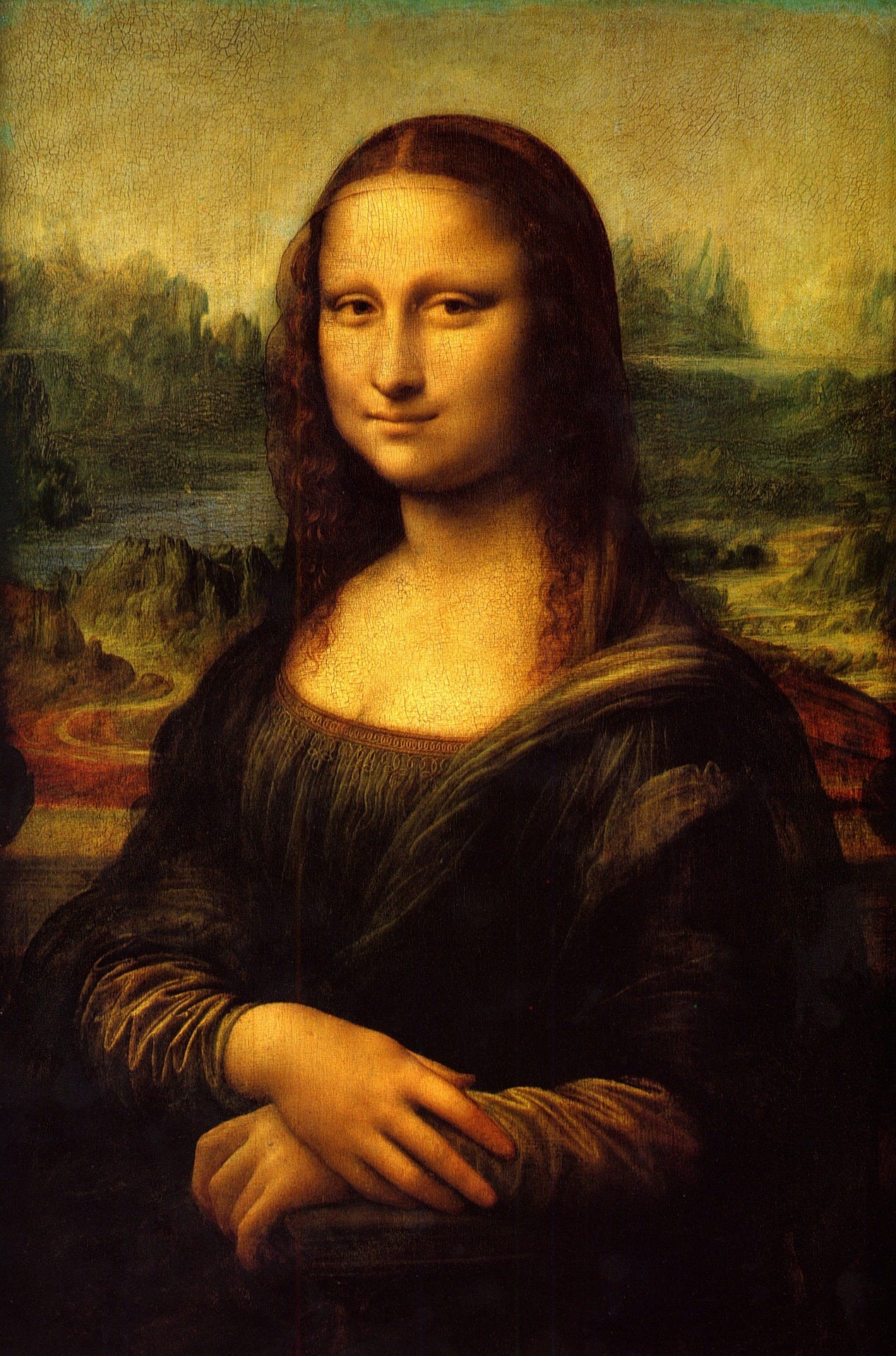In the heart of the Louvre Museum in Paris, behind a glass case and surrounded by hordes of admirers, lies one of the most iconic paintings in the world – the Mona Lisa. Created by the legendary artist Leonardo da Vinci between 1503 and 1506, this iconic masterpiece has captured the imaginations of art enthusiasts, scholars, and casual observers alike for centuries.
The Artist: Leonardo da Vinci
Leonardo da Vinci, a luminary of the Italian Renaissance, was not merely a painter but a polymath whose talents spanned science, engineering, and invention. His diverse skills are evident in the Mona Lisa, showcasing meticulous detail, and a scientific precision that goes beyond mere portraiture.
Leonardo's devotion to capturing the essence of his subjects is exemplified in the Mona Lisa. The artist employed sfumato, a technique that involves subtle blending of colors and tones, resulting in soft transitions between light and shadow. This innovative approach contributed to the lifelike quality of the painting, setting it apart from the works of his contemporaries. He took around four years, from 1503 to 1506, to complete the portrait. However, it is said that da Vinci continued to refine the painting until around 1517, just before his death.
The Subject: Lisa Gherardini
The identity of the woman in the portrait has sparked ongoing speculation. It is widely believed that the subject is Lisa Gherardini, the wife of a prosperous Florentine merchant, Francesco del Giocondo, hence the alternative name La Gioconda. Lisa's calm and composed demeanor encourages viewers to contemplate her mysterious presence. The mystery surrounding her identity makes the artwork even more fascinating.
The Smile: A Mysterious Charm
Central to the Mona Lisa's intrigue is the subject's elusive smile. Leonardo masterfully captured a smile that seems to shift and change as one gazes at the painting. This dynamic quality is achieved through the clever use of sfumato, creating an ever-changing expression that has come to be known as the "Mona Lisa smile." The ambiguity of the Mona Lisa's expression prompts diverse interpretations and adds a sense of mystery to the portrait.
Theft and Recovery
In 1911, the art world was shaken when the Mona Lisa was stolen from the Louvre by Vincenzo Peruggia, a former employee. The audacious theft catapulted the painting into the limelight, turning it into a symbol of intrigue and mystery.
For two years, the masterpiece remained missing, and the global art community was in suspense. In a surprising turn of events, Peruggia contacted an art dealer in Florence, expressing his intention to restore the painting to Italy. The subsequent negotiation and secret meeting led to Peruggia's arrest, and the Mona Lisa was joyously returned to the Louvre in 1914.
The theft and recovery not only added a thrilling chapter to the Mona Lisa's story but also enhanced its global reputation. Far from diminishing its appeal, the incident solidified the painting's status as a symbol of resilience and cultural heritage. The enigmatic smile of the Mona Lisa persisted, now accompanied by a tale of a daring theft and a triumphant return to its hallowed halls.
Cultural Impact
The Mona Lisa has transcended its status as a mere painting to become a cultural icon. Countless artists have drawn inspiration from da Vinci's masterpiece, attempting to capture the essence of the enigmatic smile or reinterpret the composition in their own unique ways. Writers, musicians, and filmmakers have all paid homage to the Mona Lisa, incorporating its charm into their creations.
The painting's influence extends beyond the realm of high art, permeating popular culture. From advertising campaigns to cartoons and memes, the Mona Lisa's image has been repurposed and parodied, showcasing its adaptability and everlasting relevance. This widespread recognition has only served to elevate the painting's status, making it a symbol not only of artistic brilliance but also of universal appreciation for beauty.
The Louvre Experience
Visitors to the Louvre are often struck by the small size of the painting, as it is only 30 inches by 20 inches. Despite its modest dimensions, the Mona Lisa's impact is immeasurable. The painting is housed in a specially designed, climate-controlled glass case to preserve it for future generations. As tourists from around the world patiently queue to catch a glimpse of the enigmatic smile, the Louvre has become a pilgrimage site for art lovers.
The Mona Lisa's placement within the Louvre, surrounded by other priceless works of art, enhances its significance as a cultural treasure. The museum offers an immersive experience, allowing patrons to explore the historical context and artistic evolution that led to the creation of this masterpiece. The Mona Lisa stands not only as a solitary portrait but as the centerpiece of a larger narrative that spans centuries and continents.
Conclusion
The Mona Lisa continues to weave a captivating tale that extends far beyond the borders of its canvas. Leonardo da Vinci's meticulous craftsmanship and innovative techniques have left an indelible mark on the art world. The painting's journey, from the artist's studio to its current residence in the Louvre, is a testament to its timeless charm and cultural significance.
As visitors marvel at the enigmatic smile and delve into the historical intrigue surrounding the Mona Lisa, they contribute to a timeless dialogue between art and humanity. The painting's mystery, resilience, and cultural impact remind us that art possesses a unique ability to transcend time, leaving an everlasting imprint on the human experience. The Mona Lisa stands as a beacon, inviting each generation to discover its secrets and appreciate the beauty that unites us across centuries.






